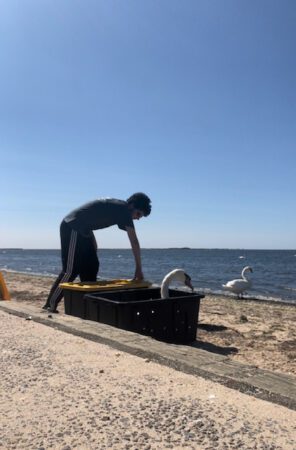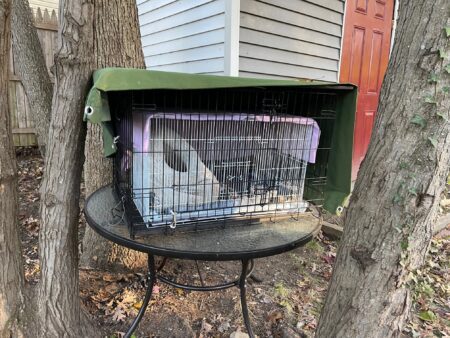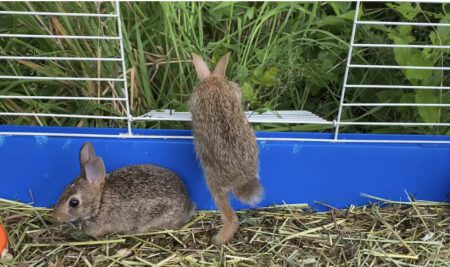As the weather cools and days get shorter, time grows shorter as well for the release of many animals in our care. Releasing an animal back into the wild is the goal, the hope for every patient that enters our facility and when the happy day comes that the animal is ready it is cause for celebration indeed. But it’s not a matter of simply opening up their cage outside and they merrily scamper or fly away. The release is a much more complicated process which requires thought and planning for its correct execution.

A staff member releases two young swans
One example of this is an orphaned chimney swift that was recently in our hospital. Young chimney swifts are very tricky to release because they must be released into an established flock of other swifts. They also have to be released before the flocks start migrating south. Young swifts, like the one in our care, often fledge right before the flock’s migration, so our window for release was very small. Our executive director spent many hours trying to locate a flock for our young swift to join and even after she found one, she had to time the release for the early evening, when the swifts were most likely to be active.
Location is also very important to the success of a release, and varies based on species, age, and time of year. Patients that come to us as adults are returned to their home turf whenever possible so that they retain access to den sites, food resources, and mates. Young animals are released in habitats that meet the specific needs of their species, but care must be taken to not release too many young in one location and overpopulate an area.
With highly social animals like squirrels, extra care needs to be taken to integrate them with the established population. Young squirrels are best off with a “soft release”, or a gradual introduction to life in the wild. The youngsters are introduced to the release site inside of a protective enclosure so that they can see, smell, and hear their surroundings but are protected from predators and other dangers.

One example of a squirrel soft release set-up. The cage is placed near a tree and elevated whenever possible. A tarp is placed over the top to protect the enclosure from rain.
Eventually the door to the enclosure is opened, allowing them to leave on their own, but the enclosure is left in place to be their “home base” even after the release. The cage is removed only after the squirrels are no longer seen returning to it for food or shelter. Without this safety net, young squirrels are often chased off by the resident squirrels into less familiar territory where they have difficulty finding food.
Some animals can be released back into the wild even during the cold winter months, but for many the odds of a successful release grow slimmer as winter nears. Mammals that rely on food stores or who hibernate during the winter need time to build a burrow or nest and stash food. Migratory birds fly south. Reptiles find a safe spot to brumate through the cold months. If it gets too late in the season or the species has migrated the patient has to be overwintered and released in the spring. This can be very stressful for the animal and is very costly for our center but unfortunately it cannot always be avoided. Almost every year there are at least a few groups of late season babies that are kept until spring.
So as the fall season advances, we at the center are busy readying our patients for release. We are checking the weather, finding locations and orchestrating everything with our transport volunteers and host sites so that our patients have the best chance at a successful release.

Young eastern cottontail rabbits are self-sufficient and ready for release when they are the size of a softball.
